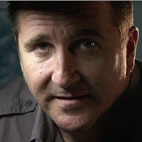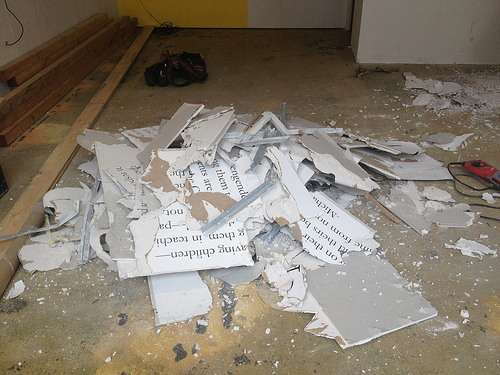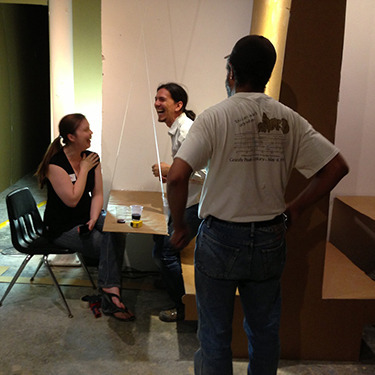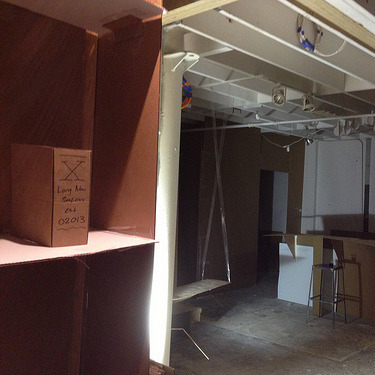Stewart Brand's Blog, page 65
October 2, 2013
PanLex hits a billion translations
The PanLex project of The Long Now Foundation, which is building a database of words and phrases in the world’s languages, has recently passed the one-billion-translation mark. That means there are now over a billion pairs of words or phrases, such as “clock” in English and “ঘড়ী” in Assamese, that PanLex records as attested translations of each other. The translations are derived from publications collected from around the world.
Beyond these billion attested translations, it is possible to infer others from longer paths of translations. For example, the number of pairs shoots up from 1 billion to 30 billion if we include translations at distance 2, namely translations of translations. The longer the path, the greater the number, and the lower the reliability, of translations.
Because counting up these totals would overload the PanLex servers, we have estimated them using a random sample of 3,000 words and phrases. The figures below show that as more words and phrases are added to the sample the estimates of distance 1 and distance 2 translations become more stable.

The main goal of the PanLex database is to make it possible ultimately to translate any word or phrase in any language into any other language on Earth. With about 7,000 languages, and assuming an average of 100,000 words and phrases per language, there should eventually be about 2.5 trillion translation pairs available from PanLex. Project participants don’t hope to reach this total on their own. Instead, they plan to provide their data to researchers who will develop increasingly effective methods of automatically inferring unattested translations from networks of attested ones.

Peter Schwartz Seminar Media
 This lecture was presented as part of The Long Now Foundation’s monthly Seminars About Long-term Thinking.
This lecture was presented as part of The Long Now Foundation’s monthly Seminars About Long-term Thinking.
The Starships ARE Coming
Tuesday September 17, 02013 – San Francisco
Video is up on the Schwartz Seminar page for Members.
*********************
Audio is up on the Schwartz Seminar page, or you can subscribe to our podcast.
*********************
Starship destiny – a summary by Stewart Brand
We now know, Schwartz began, that nearly all of the billions of stars in our galaxy have planets. If we can master interstellar travel, “there’s someplace to go.” Our own solar system is pretty boring—one planet is habitable, the rest are “like Antarctica without ice” or worse.
So this last year a number of researchers and visionaries have begun formal investigation into the practicalities of getting beyond our own solar system. It is an extremely hard problem, for two primary reasons—the enormous energy required to drive far and fast, and the vast amount of time it takes to get anywhere even at high speed.
The energy required can be thought of in three ways. 1) Impossible—what most scientists think. 2) Slow. 3) Faster than light (FTL). Chemical rockets won’t do at all. Nuclear fission rockets may suffice for visiting local planets, but it would take at least fusion to get to the planets of other stars. Schwartz showed Adam Crowl’s scheme for a Bussard Ramjet using interstellar ions for a fusion drive. James Benford (co-author of the book on all this, Starship Century) makes the case for sail ships powered by lasers based in our Solar System.
As for faster-than-light, that requires “reinventing physics.” Physics does keep doing that (as with the recent discovery of “dark energy”). NASA has one researcher, John Cramer, investigating the potential of microscopic wormholes for superluminal travel.
Standard-physics travel will require extremely long voyages, much longer than a human lifetime. Schwartz suggested four options. 1) Generational ships—whole mini-societies commit to voyages that only their descendents will complete. 2) Sleep ships—like in the movie “Avatar,” travelers go into hibernation. 3) Relativistic ships—at near the speed of light, time compresses, so that travelers may experience only 10 years while 100 years pass back on Earth. 4) Download ships—”Suppose we learn how to copy human consciousness into some machine-like device. Such ‘iPersons’ would be able to control an avatar that could function in environments inhospitable to biological humans. They would not be limited to Earthlike planets.”
Freeman Dyson has added an important idea, that interstellar space may be full of objects—comets and planets and other things unattached to stars. They could be used for fuel, water, even food. “Some of the objects may be alive.” Dyson notes that, thanks to island-hopping, Polynesians explored the Pacific long before Europeans crossed the Atlantic. We might get to the stars by steps.
Futurist Schwartz laid out four scenarios of the potential for star travel in the next 300 years, building on three population scenarios. By 2300 there could be 36 billion people, if religious faith drives large families. Or, vast wealth might make small families and long life so much the norm that there are only 2.3 billion people on Earth. One harsh scenario has 9 billion people using up the Earth.
Thus his four starship scenarios… 1) “Stuck in the Mud”—we can’t or won’t muster the ability to travel far. 2) “God’s Galaxy”—the faithful deploy their discipline to mount interstellar missions to carry the Word to the stars; they could handle generational ships. 3) “Escape from a Dying Planet”—to get lots of people to new worlds and new hope would probably require sleep ships. 4) “Trillionaires in Space”—the future likes of Elon Musk, Jeff Bezos, and Richard Branson will have the means and desire to push the envelope all the way, employing relativistic and download ships or even faster-than-light travel.
Schwartz concluded that there are apparently many paths that can get us to the stars. In other words, “Galactic civilization is almost inevitable.”
Subscribe to our Seminar email list for updates and summaries.

October 1, 2013
Adam Steltzner Seminar Primer
Tuesday October 15, 02013 at SFJAZZ Center, San Francisco
Adam Steltzner is the person responsible for putting space geeks the world over through the “seven minutes of terror” on August 6th, 02012. As the lead engineer of Curiosity rover’s “Entry, Descent, and Landing” phase, he helped create the “sky crane” and to successfully drop one of the most advanced robots in history onto another planet. The sky crane his team designed at JPL would have to perform an elaborate, impossible-seeming sequence to lower the huge Mars rover Curiosity to the planet’s surface from a hovering rocket guided totally by artificial intelligence. Humans wouldn’t know if it worked until it was all over, hence the terror. The margin of error for this mission was 0, meaning if one element didn’t work perfectly, all of the work would have been for nothing.

Adam Steltzner took a circuitous route to the space industry. After going through the motions of early schooling and barely passing math, Steltzner spent time as a musician in the Bay Area. It was one evening driving home from a gig when he noticed Orion had changed location, inspiring him to take an Intro to Physics class that changed his life, eventually leading him to a PhD in Engineering Mechanics.
Historically, missions to Mars have been fraught with accidents and miscalculations, leading to a dismal 42% success rate to date. After an initial rush of missions in the 70s as part of the Cold War space race, the first successful mission in 20 years took place in 01996. The Mars Global Surveyor collected more data than all the previous Mars missions combined and ushered in a new age of Mars exploration. After the Mars Global Surveyor, NASA launched the first two Mars rovers in 02007, which paved the way for the larger and more complex Curiosity rover, the payload of Steltzner’s sky crane. Potential future missions to Mars include drilling missions, a network of meteorological stations, a manned fly-by, and a no-return four human reality show colony. To learn more about Mars exploration, come see Adam Steltzner at SFJAZZ Center on October 15th.
Mars Rover Curiosity on Vimeo.

September 30, 2013
Population, growth and decline
In a New York Times op-ed piece recently, geographer Erle C. Ellis argues “Overpopulation is Not the Problem,” dismissing fears that humanity might exceed the Earth’s carrying capacity and bring global calamity upon ourselves.
Malthusian fears swing in and out of fashion, and the pendulum can often go too far the other way, into techno-utopianism. Ellis does argue that technology allows us to increase local carrying capacity, and in fact he sees this as a deep-seated characteristic of human nature. But in his argument, technology is no panacea.
The world population is now estimated at 7.2 billion. But with current industrial technologies, the Food and Agriculture Organization of the United Nations has estimated that the more than nine billion people expected by 2050 as the population nears its peak could be supported as long as necessary investments in infrastructure and conducive trade, anti-poverty and food security policies are in place.
Keeping everyone fed, he points out, is already within our technological powers; it simply eludes our politics.
It was almost ten years ago that Phillip Longman pointed out in a SALT talk that what we actually ought to worry about is depopulation. Citing urbanization, contraception, education (especially of women), declining infant mortality, and several other factors, he explained that fertility is falling quickly and that much of the world is already reproducing below the replacement rate. This averts the Malthusian crisis many feared, but may offer other challenges to the economy.
Ultimately, it’s not fewer people that we need, but rather a better understanding of our relationships with nature and amongst ourselves in order to effect better governance and a healthier balance within the biosphere. As Ellis puts it,
The science of human sustenance is inherently a social science. Neither physics nor chemistry nor even biology is adequate to understand how it has been possible for one species to reshape both its own future and the destiny of an entire planet. This is the science of the Anthropocene.

September 27, 2013
Salon Prototype Night: A Cardboard Proof-of-Concept
In July our Long Now Salon project passed the halfway point of fundraising, thanks to $25,000 gifts from Neil Gaiman and Cordelia Corp, and more than 200 other donations at levels big and small. The Salon will host small events both for our members and the general public. It will be equal parts library, bar, museum, and cafe. A welcoming and social place, where you’d want to go to have a great conversation.
Reaching $250,000 in funding allowed us to begin construction. And the first step of construction is destruction…
Long Now has been headquartered in this space for the last 7 years. So it was strange to see it so empty:
So empty. Too empty. And since we love to prototype at Long Now we had to prototype our Salon. The bar, the booths, even bottles in the ceiling and signs on the wall. It would help us confirm that we had the design right, and we figured we could do the whole thing in a night, with enough help and a lot of cardboard.
We invited all our Salon donors (whether $10 or $25,000) to join our cardboard building party. 50 or so fantastic members, staff and friends gathered, and here’s how the evening went:
Building the Long Now Salon in cardboard from The Long Now Foundation on Vimeo.
You’ve seen the Salon design images that show our design team’s fantastic plans in incredible, lifelike detail. But just as a physical cardboard version reveals the facts of the layout in real space (not bits), seeing actual people in the space instead of the shadow figures of the illustrations helps confirm what a great space this will be to gather in!
photos by Catherine Borgeson
If you are reading this and you were there that day, thanks again for all the hard work. This video shows you the focused activity going on as we worked on every area of the build simultaneously:
video by Mikl Em
So after all that work (and fun), what’s the verdict? Pretty good! No major issues or surprises; just a few minor adjustments and some food for thought. And most excitingly, our first real event in the proto-Salon space. A gathering of long-term thinkers building and learning: an auspicious debut for exactly what our Salon space is all about.

September 23, 2013
Adam Steltzner Seminar Tickets
Seminars About Long-term Thinking

Adam Steltzner presents “Beyond Mars, Earth”
TICKETS
Tuesday October 15, 02013 at 7:30pm SFJAZZ Center
Long Now Members can reserve 2 seats, join today! General Tickets $15
About this Seminar:
“Dare mighty things” concludes the most dramatic space video in years, “Seven Minutes of Terror.” Narrated by Adam Steltzner, it spelled out how the “sky crane” his team designed at JPL would have to perform an elaborate, impossible-seeming sequence to lower the huge Mars rover Curiosity to the planet’s surface from a hovering rocket guided totally by artificial intelligence. Humans wouldn’t know if it worked until it was all over. Hence the terror.
The actual Mars landing on August 6, 02012, went perfectly, and Steltzner found himself a TV superstar after the live coverage, and the subject of a New Yorker profile. Before the landing, Steltzner told the writer: “Six vehicle configurations. Seventy-six pyrotechnic devices. Five hundred thousand lines of code. ZERO margin of error…..You and I are sitting at the edge of an event horizon, like a black hole…. Sunday night, we’ll slip into it, and at least two universes will be awaiting us on the other side: the one where we succeed and the one where we fail. People are scared shitless now. But if we stick the landing, all of a sudden they’ll be saying, ‘Hey, how about doing the next one the same way?’ ”
Fans in the San Francisco area discovered he was local talent, the product of College of Marin, a kid who discovered science late and soared to meet it.
Now he wonders, “How does our exploration of Mars inform what might come next for us humans and our Earth?”
Dare mighty things.
This talk is in partnership with Yerba Buena Center for the Arts and we would like to extend a special welcome to the YBCA:YOU members.

September 20, 2013
Peter Schwartz Seminar Media
 This lecture was presented as part of The Long Now Foundation’s monthly Seminars About Long-term Thinking.
This lecture was presented as part of The Long Now Foundation’s monthly Seminars About Long-term Thinking.
The Starships ARE Coming
Tuesday September 17, 02013 – San Francisco
Audio is up on the Schwartz Seminar page, or you can subscribe to our podcast.
*********************
Starship destiny – a summary by Stewart Brand
We now know, Schwartz began, that nearly all of the billions of stars in our galaxy have planets. If we can master interstellar travel, “there’s someplace to go.” Our own solar system is pretty boring—one planet is habitable, the rest are “like Antarctica without ice” or worse.
So this last year a number of researchers and visionaries have begun formal investigation into the practicalities of getting beyond our own solar system. It is an extremely hard problem, for two primary reasons—the enormous energy required to drive far and fast, and the vast amount of time it takes to get anywhere even at high speed.
The energy required can be thought of in three ways. 1) Impossible—what most scientists think. 2) Slow. 3) Faster than light (FTL). Chemical rockets won’t do at all. Nuclear fission rockets may suffice for visiting local planets, but it would take at least fusion to get to the planets of other stars. Schwartz showed Adam Crowl’s scheme for a Bussard Ramjet using interstellar ions for a fusion drive. James Benford (co-author of the book on all this, Starship Century) makes the case for sail ships powered by lasers based in our Solar System.
As for faster-than-light, that requires “reinventing physics.” Physics does keep doing that (as with the recent discovery of “dark energy”). NASA has one researcher, John Cramer, investigating the potential of microscopic wormholes for superluminal travel.
Standard-physics travel will require extremely long voyages, much longer than a human lifetime. Schwartz suggested four options. 1) Generational ships—whole mini-societies commit to voyages that only their descendents will complete. 2) Sleep ships—like in the movie “Avatar,” travelers go into hibernation. 3) Relativistic ships—at near the speed of light, time compresses, so that travelers may experience only 10 years while 100 years pass back on Earth. 4) Download ships—”Suppose we learn how to copy human consciousness into some machine-like device. Such ‘iPersons’ would be able to control an avatar that could function in environments inhospitable to biological humans. They would not be limited to Earthlike planets.”
Freeman Dyson has added an important idea, that interstellar space may be full of objects—comets and planets and other things unattached to stars. They could be used for fuel, water, even food. “Some of the objects may be alive.” Dyson notes that, thanks to island-hopping, Polynesians explored the Pacific long before Europeans crossed the Atlantic. We might get to the stars by steps.
Futurist Schwartz laid out four scenarios of the potential for star travel in the next 300 years, building on three population scenarios. By 2300 there could be 36 billion people, if religious faith drives large families. Or, vast wealth might make small families and long life so much the norm that there are only 2.3 billion people on Earth. One harsh scenario has 9 billion people using up the Earth.
Thus his four starship scenarios… 1) “Stuck in the Mud”—we can’t or won’t muster the ability to travel far. 2) “God’s Galaxy”—the faithful deploy their discipline to mount interstellar missions to carry the Word to the stars; they could handle generational ships. 3) “Escape from a Dying Planet”—to get lots of people to new worlds and new hope would probably require sleep ships. 4) “Trillionaires in Space”—the future likes of Elon Musk, Jeff Bezos, and Richard Branson will have the means and desire to push the envelope all the way, employing relativistic and download ships or even faster-than-light travel.
Schwartz concluded that there are apparently many paths that can get us to the stars. In other words, “Galactic civilization is almost inevitable.”
Subscribe to our Seminar email list for updates and summaries.

Grandparents may have been an evolutionary boon
About 30,000 years ago, humans started living past the age of 30 at a rate never before seen. Laura Helmeth, writing at Slate about the findings of a study by Rachel Caspari, recently reported that cultural shifts at this point in human history allowed humans to live long enough to become grandparents and that right around this time, human population and culture began to expand and flourish in unprecedented ways, growing larger than ever before, moving into new environments and incorporating art. Having an extra generation around to help raise children and to share a longer-term perspective seems to have given humanity a huge boost:
A lot of skills that allowed humans to take over the world take a lot of time and training to master, and they wouldn’t have been perfected or passed along without old people. “They can be great teachers,” Caspari says, “and they allow for more complex societies.” Old people made humans human.
Longer life is often cited as a benefit of human evolutionary and cultural adaptation, but this work makes the case that it also provided benefits, contributing to a positive feedback loop.

September 16, 2013
Retro Report Revisits News of the Not-Too-Distant-Past
At what point does news become history? With the pace of modern journalism, one could argue it happens pretty quickly, but reality doesn’t always move as fast as the media. Many of the stories we actually need to hear simply don’t fit inside a hype cycle and thus aren’t fully told. One organization grappling with this problem is Retro Report:
Retro Report is there to pick up the story after everyone has moved on, connecting the dots from yesterday to today, correcting the record and providing a permanent living library where viewers can gain new insight into the events that shaped their lives.
Providing what they call “a timely online counterweight to today’s 24/7 news cycle,” Retro Report revisits the big stories of the not-too-distant-past and produces videos that explore what the media initially got right or wrong and how things unfolded after the cameras left.
As Carl Zimmer points out, one great application for this type of reporting is on the sciences. Science is inherently a slow, accumulative process and initial findings are often wrong:
In reality, a lot of science-related conclusions fall apart or have to be revised in later years. Science itself is starting to grapple with its flaws, with papers like “Most Published Research Findings Are False.” On the other hand, some findings gain strength over the years, as more and more evidence supports them. But those studies pile up like sand grains, and so it’s easy for journalists to overlook them, even after they’ve grown into a mountain.
Here, they tell the story of the Flavr Savr Tomato – the first transgenic crop to be sold in American grocery stores:
Even beyond science, Retro Report makes use of the advantages of hindsight to explore how the big stories of the past are still unfolding today.

September 13, 2013
Forgotten Dictionaries of Indigenous Australian Languages Rediscovered
Of the 145 indigenous languages spoken on the Australian continent, 110 are in danger of extinction, but a linguistics professor at the University of Sydney recently discovered a trove of documents that may help Australians better understand and preserve this diversity.
It started with just a pair of small notebooks from the 19th century. Michael Walsh stumbled across them in the New South Wales State Library and quickly realized they contained a handwritten dictionary of an Australian Indigenous language. The document was news to Walsh and lead him to dig deeper into the library’s archives. After two years’ worth of research, he came away with new (old) data on over 100 Australian languages, many no longer spoken. The find is a huge boon to the understanding of Australia’s linguistic history and diversity.
These documents, collected in part to harvest knowledge amid attempts to exert control on Australia’s Indigenous population, will now help to preserve that culture.

Stewart Brand's Blog
- Stewart Brand's profile
- 291 followers


















